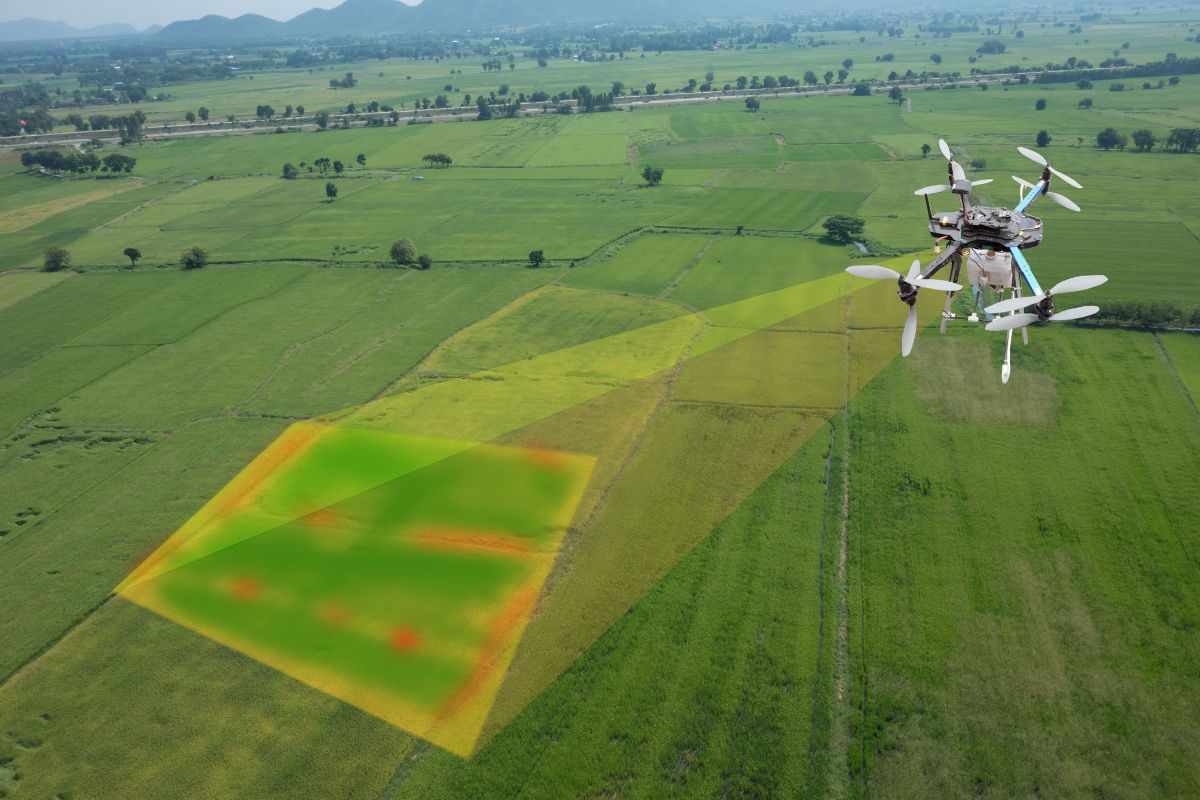
What is satellite farming? Satellite farming, also known as precision agriculture, uses satellite imagery and GPS technology to monitor and manage crops. Why is it important? It helps farmers optimize their resources, reduce waste, and increase yields. How does it work? Satellites capture detailed images of fields, providing data on soil health, moisture levels, and crop conditions. What are the benefits? Farmers can make informed decisions about planting, watering, and harvesting, leading to more efficient and sustainable farming practices. Who uses it? Farmers, agronomists, and agricultural companies worldwide rely on satellite farming to improve productivity and sustainability. Is it expensive? While initial costs can be high, the long-term savings and increased yields often outweigh the investment. Ready to learn more? Let's dive into 31 fascinating facts about satellite farming!
What is Satellite Farming?
Satellite farming, also known as precision agriculture, uses satellite technology to monitor and manage crops. This method helps farmers increase efficiency, reduce waste, and improve crop yields. Let's dive into some fascinating facts about satellite farming.
-
Origins: Satellite farming began in the 1990s when GPS technology became widely available. Farmers started using GPS to map fields and track equipment.
-
GPS Technology: GPS helps farmers navigate fields with precision, reducing overlap and missed spots during planting and harvesting.
-
Remote Sensing: Satellites equipped with sensors can detect crop health, soil moisture, and nutrient levels from space.
-
Drones: Drones complement satellites by providing high-resolution images and real-time data.
-
Variable Rate Technology (VRT): VRT allows farmers to apply fertilizers, pesticides, and water at varying rates across a field, optimizing resource use.
-
Yield Mapping: Yield monitors on harvesters collect data on crop yields, helping farmers identify high and low-performing areas.
-
Soil Sampling: Satellite data guides soil sampling, ensuring samples are taken from representative areas.
-
Weather Forecasting: Satellites provide accurate weather forecasts, helping farmers plan planting, irrigation, and harvesting.
-
Crop Monitoring: Regular satellite images track crop growth and identify issues like disease or pest infestations early.
-
Field Mapping: Detailed maps of fields help farmers plan planting patterns and manage resources efficiently.
Benefits of Satellite Farming
Satellite farming offers numerous advantages that can revolutionize agriculture. Here are some key benefits:
-
Increased Efficiency: Precision farming reduces waste and maximizes resource use, leading to higher efficiency.
-
Cost Savings: By applying inputs only where needed, farmers save money on seeds, fertilizers, and pesticides.
-
Environmental Impact: Reduced chemical use and optimized water management lessen agriculture's environmental footprint.
-
Higher Yields: Better management practices result in higher crop yields and better quality produce.
-
Data-Driven Decisions: Farmers make informed decisions based on accurate data, improving overall farm management.
-
Risk Management: Early detection of issues allows for timely interventions, reducing crop loss risks.
-
Sustainability: Precision farming promotes sustainable practices, ensuring long-term agricultural productivity.
-
Labor Savings: Automation and precise equipment guidance reduce the need for manual labor.
-
Market Competitiveness: Efficient and high-yield farming practices make farmers more competitive in the market.
-
Food Security: Increased productivity contributes to global food security by producing more food on the same land.
Challenges in Satellite Farming
Despite its benefits, satellite farming faces several challenges. Understanding these can help in finding solutions.
-
Cost of Technology: High initial costs for equipment and technology can be a barrier for small farmers.
-
Data Management: Handling and analyzing large volumes of data requires expertise and resources.
-
Connectivity Issues: Rural areas may lack the necessary internet connectivity for real-time data transfer.
-
Training: Farmers need training to effectively use precision agriculture tools and interpret data.
-
Maintenance: High-tech equipment requires regular maintenance and updates.
-
Data Privacy: Concerns about data ownership and privacy can deter farmers from adopting new technologies.
-
Weather Dependency: Satellite data can be affected by weather conditions, such as cloud cover.
-
Integration: Integrating various technologies and data sources into a cohesive system can be complex.
-
Regulatory Hurdles: Regulations regarding drone use and data sharing can pose challenges.
-
Adoption Rate: The adoption rate of satellite farming varies, with some regions lagging due to economic or educational barriers.
-
Technological Advancements: Rapid advancements in technology require continuous learning and adaptation by farmers.
The Future of Satellite Farming
Satellite farming is changing agriculture. With precision agriculture, farmers can monitor crops, manage resources, and boost yields like never before. Remote sensing helps track soil health, moisture levels, and crop growth, making farming more efficient and sustainable.
Data analytics plays a big role too. By analyzing satellite data, farmers can make informed decisions, reducing waste and increasing productivity. This tech isn't just for big farms; small-scale farmers benefit too, making agriculture more inclusive.
Climate change poses challenges, but satellite farming offers solutions. By adapting to changing conditions, farmers can ensure food security for future generations. As technology advances, the potential for satellite farming grows, promising a brighter, more sustainable future for agriculture.
Embracing these innovations means better food production, resource management, and environmental care. Satellite farming is here to stay, transforming how we grow our food.
Was this page helpful?
Our commitment to delivering trustworthy and engaging content is at the heart of what we do. Each fact on our site is contributed by real users like you, bringing a wealth of diverse insights and information. To ensure the highest standards of accuracy and reliability, our dedicated editors meticulously review each submission. This process guarantees that the facts we share are not only fascinating but also credible. Trust in our commitment to quality and authenticity as you explore and learn with us.
